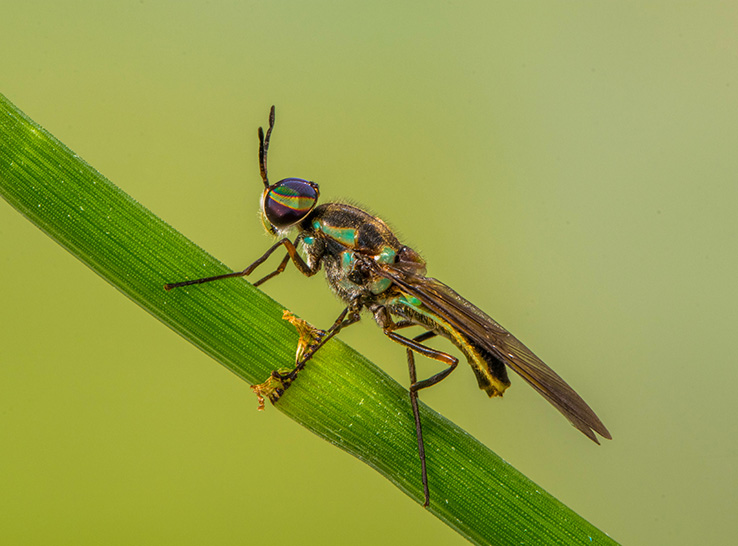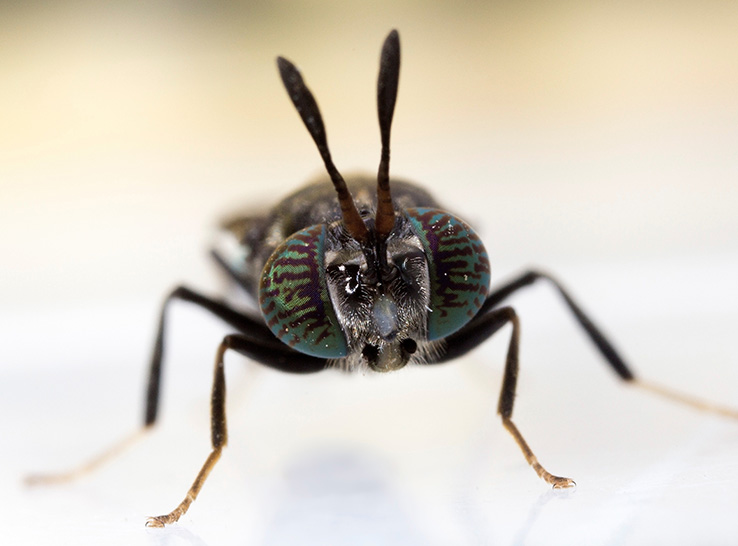Black soldier fly is increasingly well-known as a sustainable alternative protein. But frass, a byproduct of producing meal from the insect, could also offer an option for feeding growing broilers.
Research led by Nelsa Beckman, a graduate research assistant at Auburn University, set out to explore the impact of feeding broilers different levels of frass, which includes insect larvae exoskeletons, excrement and used feed stocks, as part of their diet.
Although a new area of study in poultry science, frass has previously been fed to farmed fish with promising results, Beckman told an audience at the 2024 Poultry Science Association annual meeting.
Putting frass to the test
The research team conducted a 41-day study involving 1,200 male chicks in 48 pens. They tested 5%, 10% and 15% frass inclusion in a corn-soy diet against a control of only the conventional ingredients.
During the study, the researchers measured pen and feeder weight to calculate bodyweight gain, feed-conversion ratio and feed intake. They also carried out footpad dermatitis lesion scoring on the final day of the experiment.
Beyond performance and welfare metrics, the team evaluated the impact of including frass on meat quality and consumer acceptance. After the 41-day period in live production, they euthanized 12 birds from each pen and scored for myopathy in breast meat.
Next, the researchers tested for color, losses during cooking, water-holding capacity and texture. They used electronic sensors to analyze the meat flavor and aroma, then set up a consumer panel to assess acceptability by the public.
Safe, quality meat — but some live-production issues
The study showed that feeding frass had no negative effect on mortality, with birds on the 15% frass diet having 6 percentage points lower mortality than the control group. This finding highlighted the safety of frass as a feed ingredient, Beckman suggested.
Although frass inclusion did not affect food intake, the birds fed 15% frass had lower bodyweight gain and higher feed conversion. Footpad dermatitis lesions also increased with higher quantities of frass.
The researchers did not observe significant differences in breast-meat drip or cook loss. Also, diet did not seem to affect light or red coloring in the meat, striping or the occurrence of spaghetti meat. Striping and spaghetti meat are muscle abnormalities that reduce chicken breast-meat quality.
However, yellowness, which is generally seen as less appealing by consumers, reduced with increased levels of frass.
Consumers prefer frass-fed chicken
Using electronic aroma sensors, they found that there were no significant differences in raw meat resulting from the different diets but significant differences when the meat was cooked. When taste sensors were applied, the researchers saw no differences between diets when considering either raw or cooked meat.
When the consumer group ate the meat, the research team recorded no significant differences in chicken flavor intensity, texture intensity or off-flavor intensity.
However, the meat from birds fed the 5% frass diet had the numerically weakest off-flavor intensity, Beckman noted; this was reflected in overall consumer preference, as the tasters significantly preferred the meat from the birds fed this diet.
“Frass can partially replace dietary corn, soybean meal and calcium sources while increasing dietary fat,” Beckman concluded.
“However, further research is warranted into amino acid and energy digestibility to determine some of those pitfalls in the live-performance data that we saw.”





